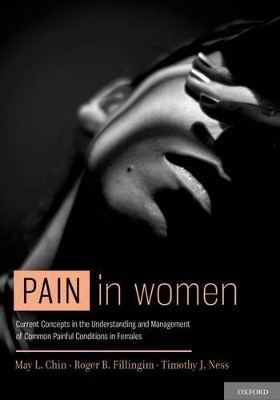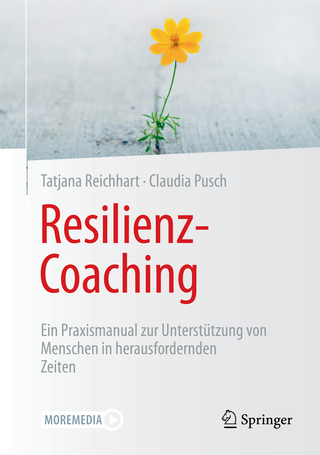
Pain in Women
Oxford University Press Inc (Verlag)
978-0-19-979641-0 (ISBN)
As recently detailed in an Institute of Medicine Report, pain represents one of the most costly and prevalent public health conditions in the United States, and the burden of pain is substantially greater for women than men. Women make up half of the world's population. Yet, the overall treatment of pain in women remains challenging to this day. The differences between men and women are anatomical, physiological and psychosocial in nature. Consequently, several unique features come to mind when discussing pain as experienced by women, such as pain related to pregnancy, pain related specifically to female organs, and chronic painful conditions which have a higher prevalence in the female population.
The purpose of this book is to address the current understanding of mechanisms related to sex differences, and the clinical management of common acute and chronic painful conditions in women, using up-to-date evidence-based information. The painful conditions discussed include those that are specific to female anatomy and physiology and conditions that have a higher female prevalence.
The book is divided into three sections. The first section covers basic science topics related to sex differences in pain. The epidemiology of painful conditions with female prevalence; sex differences in response to pain, and to analgesics; the role of sex hormones and genotype in pain perception and analgesia; sex differences in cerebral responses to pain revealed by brain imaging ; and the role of psychosocial factors, including psychological interventions will be discussed in this section.
The second and third sections are clinically directed. The second section focuses on pain specific to female patients. Topics include the management of labor pain; the management of painful conditions during pregnancy; and the management of pain in the opioid tolerant pregnant patient. The latter includes discussion on the impact of pain management on the fetus in utero, and on the newborn who is breastfed. Chronic pain specific to females, including dysmenorrhea, chronic pelvic pain and vulvodynia will be discussed in this section. Cancer-related pain issues in women will be addressed in the chapter on persistent pain after breast cancer treatment and the chapter on interventional management of pelvic cancer pain.
The third section covers painful conditions with high female prevalence. These include fibromyalgia, chronic fatigue syndrome and neuropathic pain in complex regional pain syndrome. Visceral pain with female prevalence such as irritable bowel syndrome, chronic pelvic pain of undetermined etiology will also be addressed in this section. This section also includes chapters on the presentation of cardiac pain in women; headaches including migraine; and temporomandibular joint disorders and orofacial pain.
The book is intended for a wide readership, including physicians and allied healthcare professionals who encounter female patients with acute or chronic painful conditions. In addition, residents and medical students in training as well as graduate students in health sciences will benefit greatly from this book as they continue to learn about and manage difficult and complex issues related to pain in female patients.
MLC: Professor of Anesthesiology and Critical Care Medicine, George Washington University, Washington, DC. RBF: Professor, University of Florida College of Dentistry; Staff Psychologist, Gainesville VA Medical Center, Gainesville, Florida. TN: Professor of Anesthesiology, University of Alabama at Birmingham, Birmingham, Alabama
Section I: SEX DIFFERENCES IN PAIN: EPIDEMIOLOGY, PAIN PERCEPTION, AND ANALGESIC RESPONSES ; Chapter 1: Epidemiology of Pain Conditions with Higher Prevalence in Women ; Linda LeResche ; Chapter 2: Sex Differences in Experimental Pain Responses ; Christopher D. King, Margarete Ribeiro-Dasilva and Roger B. Fillingim ; Chapter 3: Brain Imaging: Sex Differences in Cerebral Response s to Pain ; Katy Vincent and Irene Tracey ; Chapter 4: Sex Differences in Analgesic Responses: Clinical and Experimental Studies ; Marieke Niesters, Albert Dahan, Leon Aarts, and Elise Sarton ; Section II: BIOPSYCHOSOCIAL FACTORS CONTRIBUTING TO SEX DIFFERENCES ; Chapter 5: Sex-Dependent Genetic Contributions to Pain and Analgesia ; Jeffrey S. Mogil ; Chapter 6: Role of Sex Hormones in Pain and Analgesia ; Rebecca Craft ; Chapter 7: Role Psychosocial Factors and Psychological Interventions ; Edmund Keough ; Section III: FEMALE SPECIFIC PAIN ; Chapter 8: Current Management of Labor Pain ; Cynthia A. Wong ; Chapter 9: Pain in Pregnancy ; Maryam Jowza, Geeta Nagpal, and James P. Rathmell ; Chapter 10: The Opioid Tolerant Pregnant Patient ; Nilda E. Salaman and May L. Chin ; Chapter 11: Chronic Pelvic Pain: Dysmenorrhea and Endometriosis ; Amy Stenson and Andrea J. Rapkin ; Chapter 12: Vulvodynia ; Ursula Wesselmann and Peter Czakanski ; Chapter 13: Persistent Pain After Breast Cancer Treatment ; Kenneth Geving Andersen and Henrik Kehlet ; Chapter 14: Interventional Techniques for Pelvic Cancer Pain ; Kari Kopko Bancroft and Oscar A. de Leon-Casasola ; Section IV: PAINFUL CONDITIONS WITH FEMALE PREVALENCE ; Chapter 15: Fibromyalgia and Chronic Fatigue Syndrome ; Alethia Baldwin Sellers and Daniel Clauw ; Chapter 16: Complex Regional Pain Syndrome ; Marissa de Mos and Frank J. P. M. Huygen ; Chapter 17: Irritable Bowel Syndrome ; Margaret D. Eugenio, Monica E. Jarrett, and Margaret M. Heitkemper ; Chapter 18: Interstitial Cystitis/Bladder Pain Syndrome ; Meredith T. Robbins and Timothy J. Ness ; Chapter 19: Chronic Pelvic Pain of Uncertain Origin ; Andrew Baranowski ; Chapter 20: Cardiac Pain in Women ; Eileen Handberg and Marian Limacher ; Chapter 21: Migraine in Women ; Satnam S. Nijjar, Jason Rosenberg, and B. Lee Peterlin ; Chapter 22: Temporomandibular Joint Disorders and Orofacial Pain ; Asma A. Khan, William Maixner, and Pei Feng Lim
| Verlagsort | New York |
|---|---|
| Sprache | englisch |
| Maße | 254 x 178 mm |
| Gewicht | 771 g |
| Themenwelt | Geisteswissenschaften ► Psychologie ► Sozialpsychologie |
| Medizin / Pharmazie ► Medizinische Fachgebiete ► Anästhesie | |
| Medizin / Pharmazie ► Medizinische Fachgebiete ► Gynäkologie / Geburtshilfe | |
| Medizin / Pharmazie ► Medizinische Fachgebiete ► Schmerztherapie | |
| ISBN-10 | 0-19-979641-6 / 0199796416 |
| ISBN-13 | 978-0-19-979641-0 / 9780199796410 |
| Zustand | Neuware |
| Haben Sie eine Frage zum Produkt? |
aus dem Bereich


